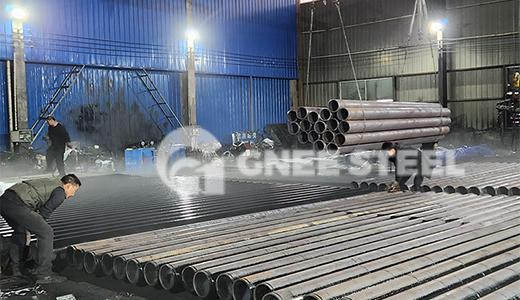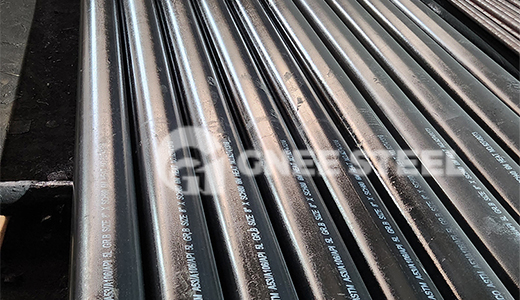The function of heat treatment is to improve the material mechanical properties of steel pipes and precision steel pipes, eliminate residual stress, and improve the cutting performance of steel pipe metal.
According to the different purposes of heat treatment, heat treatment processes can be divided into two categories: preliminary heat treatment and heat treatment.
1. Preliminary heat treatment improves the cutting performance of steel pipe metal
The purpose of preliminary heat treatment is to improve processing performance, eliminate internal stress, and prepare a good metallographic structure for heat treatment. Heat treatment processes include annealing, normalizing, aging, quenching and tempering, etc.
(1) Annealing and normalizing
Annealing and normalizing are used for thermal processing of blanks. Carbon steel and alloy steel with a carbon content greater than 0.5% are often annealed to reduce hardness and make cutting easier; carbon steel and alloy steel with a carbon content less than 0.5% are often used to avoid adhesion when the hardness is too low. On the contrary, using normalization, annealing and normalizing can still refine the grains and uniform structure in preparation for subsequent heat treatment. Annealing and normalizing are usually arranged after blank manufacturing and before rough machining.

(2) Aging treatment
Aging treatment is mainly used to eliminate the internal stress generated during blank manufacturing and machining.
(3) Quenching and tempering
Quenching is a high-temperature tempering treatment after quenching. A uniform and fine tempered sorbite structure can be obtained, which can reduce deformation during subsequent surface quenching and nitriding treatments, so quenching and tempering can also be used as preliminary heat treatments.
2. Final heat treatment improves the cutting performance of steel pipe metal
The purpose of the final heat treatment is to improve mechanical properties such as hardness, wear resistance and strength.
(1)Quenching
Quenching includes surface quenching and overall quenching. Among them, surface quenching is widely used because of its small deformation and less oxidation and decarburization. Surface quenching also has the advantages of high external strength and good wear resistance, while maintaining good internal toughness and strong impact resistance. In order to improve the mechanical properties of surface-hardened parts, heat treatments such as quenching and tempering or normalizing are often required as preliminary heat treatments. The general process route is: blanking-forging-normalizing (annealing)-roughing-quenching and tempering-semi-finishing-surface quenching-finishing.
(2) Carburizing and quenching
Carburizing and quenching is suitable for low carbon steel and low alloy steel. First, increase the carbon content of the surface layer of the part. After quenching, the surface layer can obtain higher hardness, while the core remains unchanged. High strength, good toughness and plasticity. Carburizing is divided into overall carburizing and partial carburizing. In the case of partial carburization, anti-seepage measures (copper plating or anti-seepage material plating) should be taken for the non-carburized parts. Due to the large deformation during carburizing and quenching, the carburizing depth is generally between 0.5 and 2mm, and the carburizing process is generally arranged between semi-finishing and finishing.

(3) Nitriding treatment improves the performance of steel pipes
Nitriding is a treatment method that penetrates nitrogen atoms into the metal surface to obtain a layer of nitrogen-containing compounds. The nitriding layer can improve the hardness, wear resistance, fatigue strength and corrosion resistance of the part surface. Since the nitriding treatment temperature is low, the deformation is small, and the nitriding layer is thin (generally no more than 0.6~0.7mm), the nitriding process should be arranged as late as possible. In order to reduce deformation during nitriding, it is generally required to perform stress relief and high temperature tempering after cutting.

